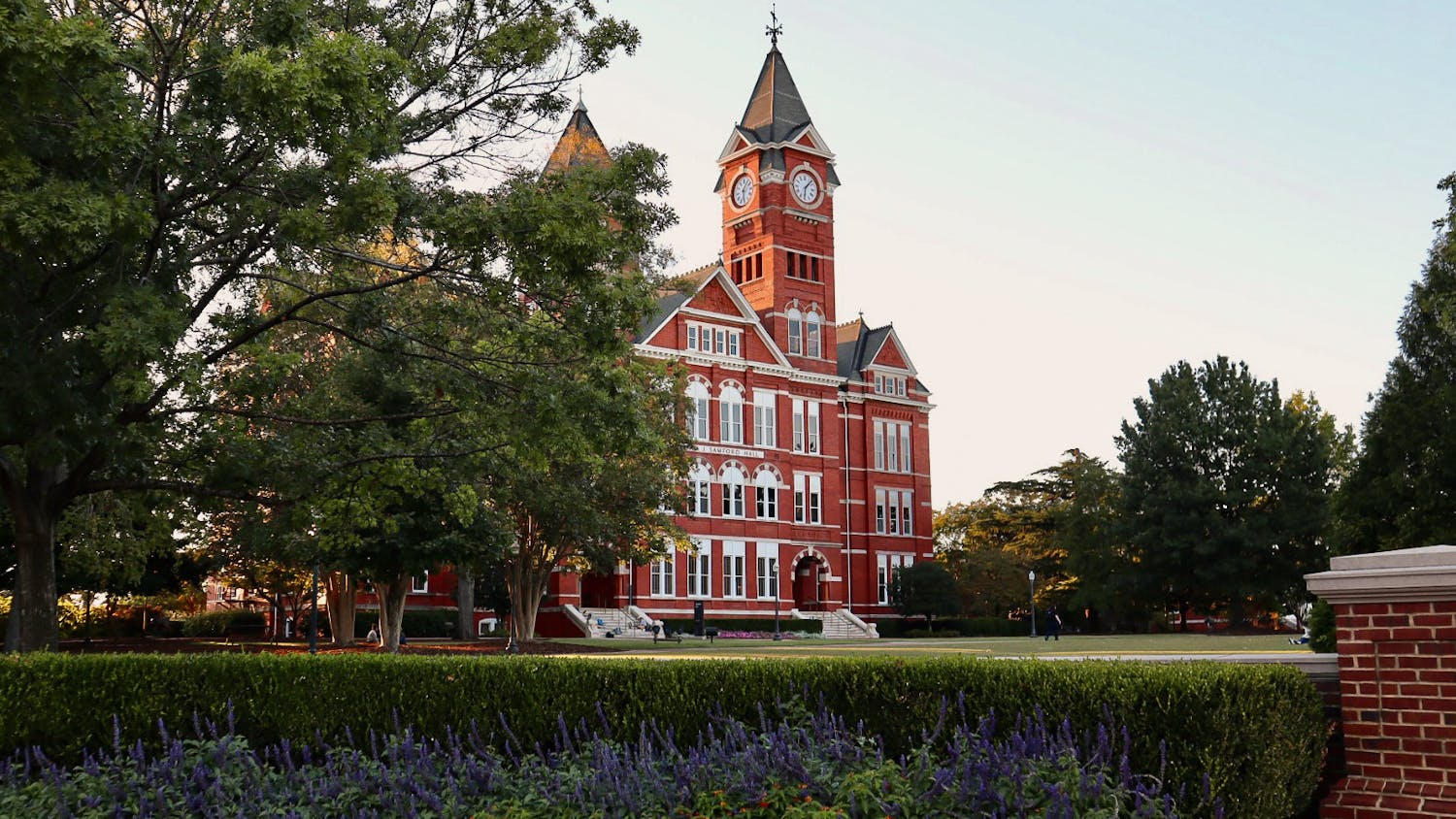The Louise Kreher Forest Ecology Preserve was the host of Rusty Ligon's program called Beautiful Bluebird Saturday, which focused on the Eastern Bluebird, native to Alabama.
A crowd of families came, armed with binoculars and note pads.
"Bluebirds and happiness correlate," said Jennifer Lolley, administrator of the Ecology Preserve.
In his program, Ligon, a grad student in omithology discussed bluebird behavior, characteristics and tips to attract them to the home.
He also gave instructive information for people interested in putting a bluebird box in their backyard.
"They are cavity-nesters, meaning birds that have to nest in a hole," Ligon said.
Bluebirds today typically use human-made boxes to nest in.
"They don't have a bill to make their own hole," Ligon said. "They relied on natural cavities that had been made my other birds until people began making bluebird boxes."
There are 85-89 bluebird boxes around Auburn's campus.
"It's one of the few success stories in the relationship between humans and nature," said Caroline Gelhard, an attendee of the program.
Bluebirds have recovered from a decline in the beginning of the century, thanks to man-made boxes.
"Boxes are the limiting factor when it comes to attracting bluebirds," Ligon said.
Bluebirds like open habitats like orchards and fields.
They are especially interested in nesting in areas with cover available nearby, and they will seek out a cavity to nest in, Ligon said.
Ligon is an ornithology graduate student at Auburn University.
He is specializing in animal behavior and said bluebirds are good subjects to study.
They use different tactics to defend themselves, their territory and their nestlings and are known for being especially territorial.
"They will defend their territories very aggressively," Ligon said.
Early in the year, the males come first to establish their future-breeding territory.
Around the box they will try to find and attract a female to join them, but any intruders will have to fight the male for his claimed area.
"Their offspring are a resource that they have invested in," Ligon said.
If their nestlings were two weeks old and a potential predator were to get too close to their nest they would react more aggressively than if the nestlings were only a few days old, Ligon said.
Roughly 80 percent of bluebirds' diets are made up of insects, while the other portion includes fruit and spiders. Despite having large song repertoires, bluebird songs are easy to learn.
"They sound angry pretty much all the time," Ligon said.
There is a "chitter chatter" noise when they are upset and they will begin to click their beaks when they become really upset.
There are three main ways that birds color themselves.
The first is through melanin, similar to humans, and another way to produce color is through carotenoids, which are taken out of things that they ingest, for example, fruit.
Flamingos are an example of birds that color themselves using carotenoids.
The third way for birds to produce color is through structure. This is what bluebirds use.
"The structure of feathers scatters the light differently," Ligon said. "Blue properties are a product of the way different particles of a feather reflect and refract light."
Contrary to the term "bird-brained," birds are the largest-brained mammals, considering body mass to brain mass.
"Most of their brain power doesn't go to cognitive tasks," Ligon said. "They have high-quality motor control and incredible visual acuity."
Birds see color completely differently than humans.
Humans have three dimensions of color: red, green and blue, and birds, on the other hand, have four dimensions. They see in red, green, blue and ultraviolet.
There are a few ways to limit predation on bluebird boxes, Ligon said.
One way only includes using Axel grease on the pole to keep fire ants and small snakes away from the nest.
The other way to attempt to keep larger snakes out of the boxes is to place a sheet of corrugated tin underneath the box, toward the top of the pole.
"None of these are foolproof," Ligon said.
A live bluebird from the ornithology department was the closing of the program.
The crowd was invited to touch and observe the bird they had just learned about and many of the children were eager to get a closer look.
The Ecology Preserve is continuing outdoor education in programs throughout the summer.
Do you like this story? The Plainsman doesn't accept money from tuition or student fees, and we don't charge a subscription fee. But you can donate to support The Plainsman.





